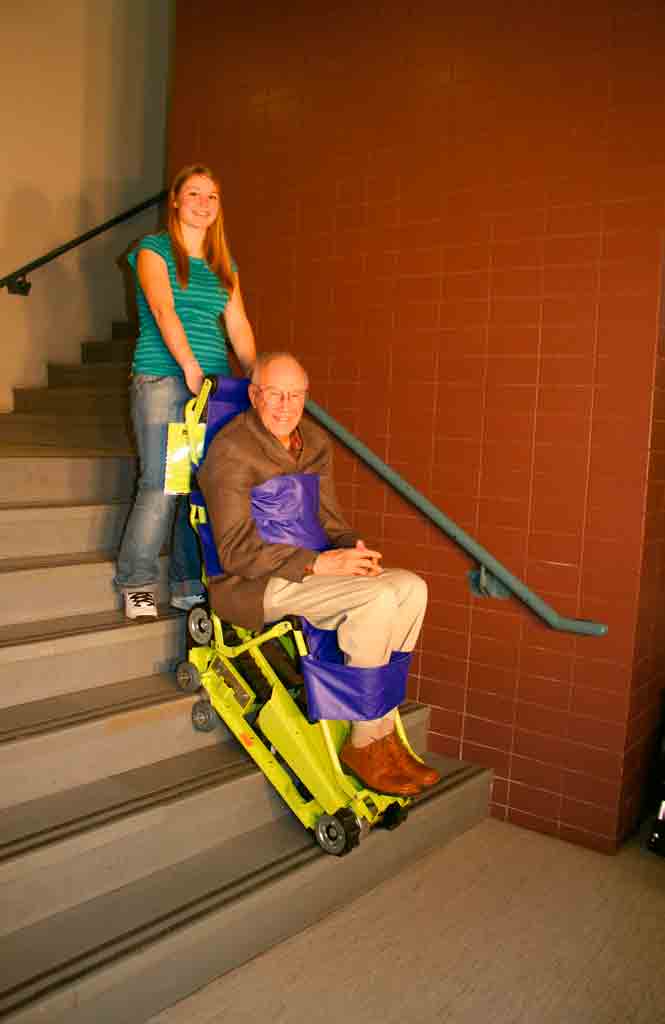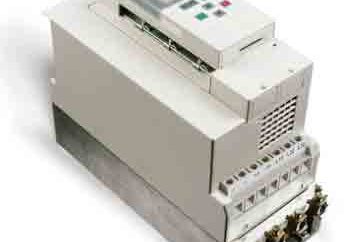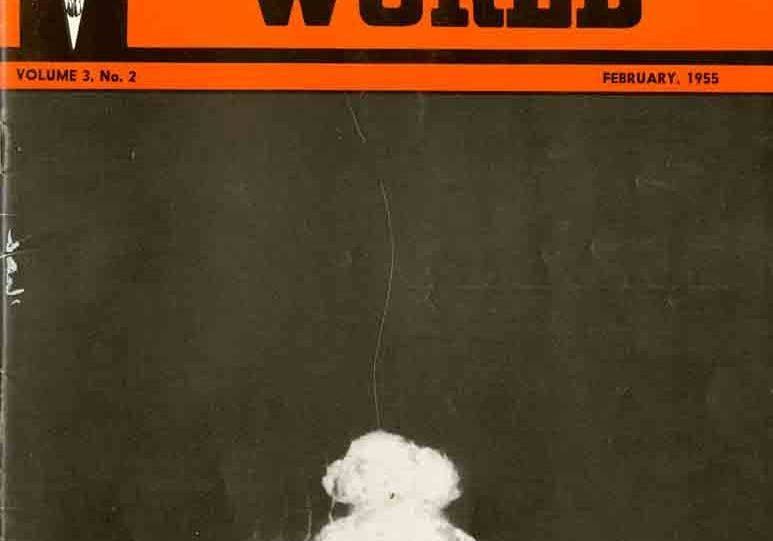Stairwells Are Not for Wheelchairs
Nov 1, 2017

In this Industry Dialogue, Garaventa’s Trevor de Jaray discusses Evacu-Trac products and how they fit in to a “kinder and gentler” world.
With the U.S. federal government and companies such as Microsoft leading the way, we have become a much “kinder and gentler” world in making workplaces accessible for those with mobility issues, says Trevor de Jaray (TDJ), sales manager for Garaventa Lift’s Trac evacuation products division. This, along with the increased frequency of manmade and natural disasters, has fueled demand for solutions such as Garaventa’s Evacu-Trac, a specialized tracked chair used to evacuate people during emergencies. Here, de Jaray talks to ELEVATOR WORLD about how Garaventa’s evacuation products evolved and how different scenarios in different parts of the world are driving demand and bringing about change.
EW: Tell me about Garaventa’s evacuation product line (Evacu-Trac and Power Evacu-Trac) and how it originated.
TDJ: Garaventa offers two emergency-evacuation solutions: first, Evacu-Trac, the only evacuation chair on the market with a hydraulic speed governor and patented brake. This is a non-powered unit for standard evacuation that is pulled by gravity down to grade level. We also have the Power Evacu-Trac, one of only two powered evacuation chairs on the market. Run by a motor and rechargeable battery pack, the chair transports people with injuries or mobility issues up or down a stairway quickly and safely. We also manufacture home elevators and inclined vertical wheelchair lifts, but Evacu-Trac is our key evacuation tool.
Originally a Swiss company, what really put Garaventa on the map in North America was our curving inclined platform wheelchair lifts. In fact, Garaventa installed its first inclined platform lifts in North America in 1978, 12 years before the Americans with Disabilities Act (ADA) was enacted. Before long, our wheelchair lifts could be found in most major U.S. urban markets.
Garaventa helped bring entities into ADA compliance by installing its wheelchair lifts in federal and state government buildings, courthouses and schools. They do, however, block stairways when in use. So, in an emergency, they are disabled by code. Here we were busy installing lifts to get wheelchair users up flights of stairs, but we had nothing to get them down in an emergency. That’s how the Evacu-Trac came about.
Norm Cooper, who has since retired, was in Japan in the early 1990s doing installations and developing a dealer network when he came across a Japanese company that had a patent for a rubber track system that he realized could be modified to manufacture evacuation chairs. A prototype was developed, and Garaventa inked an agreement with the Japanese company to manufacture the chairs. Since 1993, it’s been an amazing partnership.
EW: How are Evacu-Trac sales, and what is the outlook?
TDJ: Sales are good, but the market should be way bigger. We estimate, conservatively, that less than 15% of the building stock in North America has any evacuation chair whatsoever. However, expectations about evacuations are changing, for several reasons, and that bodes well for us.
In 2014, a disability-advocacy group sued the City of Los Angeles for discrimination for failure to plan for properly evacuating those with disabilities, and they won. A similar suit was filed against New York City (NYC). By dumb luck, just before it went to court, Hurricane Sandy hit, exposing again the failure to properly plan evacuation strategies and install related equipment. NYC ultimately lost that case as well. So, now, there is this precedent and other cities are taking note, as I imagine lawyers are, too.
As we experience more frequent natural disasters and more failures to plan are exposed, people and governments are going to start being sued for discrimination and, worse yet, wrongful death. As with all building deficiencies exposed in the past, cities will push responsibility back on to the property owner, and ultimately amend their building codes. So new, stronger evacuation guidelines are where it is slowly going to go. In most cases, pushing wheelchair users into stairwells and leaving them there for first responders to find them will be simply unacceptable.
National Fire Protection Association and other vested groups have been pushing for a national standard of what defines an evacuation chair for over a decade. Anybody could call anything an evacuation chair. We now have a national standard certified by Rehabilitation Engineering and Assistive Technology Society of North America. We are proud that Evacu-Trac meets that standard.
EW: The Power Evacu-Trac takes evacuees up to grade. What are some scenarios for which this would be useful?
TDJ: In some workplaces, you’ve got to go up to get out. These include habitable basements. The Information Technology Department of the L.A. Police Department is in the basement. It’s cooler down there and is where the computer servers are. Hospital labs are also often in basements. The U.S. Department of the Treasury is doing a huge, multi-year, billion-dollar renovation that involves clearing out their basement to create temporary office space during renovation. Some of these people will be three stories down and, in an emergency, will need to evacuate up.
How many chairs a building needs depends on how many people you’ve got in there. Roughly 3% of the population is disabled, but you’ve got to address emergency transportation for all. The U.S. Treasury basement offices may house dozens of workers, so in that application they have three Power Evacu-Tracs.
EW: What have been some accessibility turning points for Garaventa and why?
TDJ: We’ve been in North America since 1976, but the accessibility climate has really changed a lot since then. A few years after the passage of the ADA in 1992 was when people really starting needing accessibility and evacuation solutions for disabled people. One of the drivers of the ADA legislation was the U.S. government, not only as a legislator but also a huge employer of disabled people, particularly wounded war veterans. Since the early 1990s, we’ve become a much kinder, gentler and far more inclusive society for those with mobility issues, accommodating them in our schools and workplaces.
When 9/11 happened, that really changed everything, and not for the reason that you think. Until then, the main protocol in dealing with those with disabilities in an evacuation was to guide them into a stairwell and leave them there until help came. These are called areas of refuge. The rationale behind it is stairwells are built to a higher fire rating than the rest of the building. But, in 9/11, the stairwells were not standing. In a small fire a stairwell works fine, but not in a major disaster.
When we look at large-scale disasters, such as 9/11 and natural ones such as Hurricane Katrina flooding or the Mexico earthquakes, we can see that the area-of-refuge approach no longer makes sense. So, what has happened is the federal government has really moved away from areas of refuge to “everybody get out.” This would be the same in an emergency situation at a school, whether it’s an active shooter situation or natural disaster.
EW: What sort of feedback have you gotten from customers? Any success stories?
TDJ: They have told us they love to use the Evacu-Trac chairs in emergency drills and during false alarms. One of our customers had a ceiling fan burn out near the air-conditioning intake area, distributing the smell of smoke throughout the building. It set off an alarm and everybody got out quickly and easily. They say they feel at ease having the chairs as part of their plan, that it won’t be a bloody “gong show” getting all their students or coworkers out. They’ve decided they are not leaving people behind, that “that’s not the way we’re going to do this.”
EW: Describe your customer base.
TDJ: For the most part, government agencies (local, state federal), school districts and forward-thinking public and private corporations. Private industry generally doesn’t want to pay for anything it doesn’t have to. Currently, evacuation chairs aren’t mandated. What is mandated is having an evacuation plan. The reality is that areas of refuge and relying on fire departments to rescue people is still the norm and increasingly more a bad idea.
Microsoft is different. They realized early on the wheelchair community could be a huge source of talent. They have a whole accessibility committee and are very proactive. All their campuses are equipped with evacuation chairs. If you’re a bright, young person in a wheelchair, you’re going to gravitate towards a company that shows, through its actions, that it values you. Microsoft has done just that.
EW: What is the outlook for Evacu-Trac, and what is that outlook based on?
TDJ: The outlook is bright. There will be more discrimination lawsuits against cities and companies. Why that’s going to happen is we’ve got a whole bunch of people streaming in from Gulf wars who are injured, and a whole other group that is living longer than ever before. Senior access and evacuation is going to become a major deal because seniors A, have money, and B, vote.
EW: How does the approach to accessibility and evacuation vary in different parts of the country and world?
TDJ: The U.S. is more proactive than Canada, but Europe has been active for longer than anywhere in North America. The reason is, if you take a look at, for example, the U.K. and Ireland, they have been dealing with terrorism, complicated subway systems and evacuation much longer. Canada lags the U.S. for a couple of reasons. We don’t have anything that truly resembles the ADA yet. What I mean by that is a federal law that covers the entire country with a department of justice enforcing it. If you’re a disabled person in the U.S., the system may not be perfect, but it is one of the best places to live because of the ADA. Do I think Canada will catch up? Absolutely. Two provinces are rolling out quasi ADA legislation now. Others will follow.
Countries in the Middle East are taking action. Saudi Arabia had several deaths due to a hospital fire a few years ago, and the kingdom is revising its emergency-evacuation strategy. Earlier this year, I visited Oman, where the Royal Omani Police are working with a larger government agency to update its evacuation protocol.
I think every high-occupancy building will have multiple chairs mandated by their local fire codes in the next five to 10 years. Before someone can get an occupancy permit, they will have to have an evacuation chair or chairs in place. It’s slowly becoming reality, and we’re at the beginning of that arc of growth. No one wants to be left behind in an emergency. Would you?
Get more of Elevator World. Sign up for our free e-newsletter.








